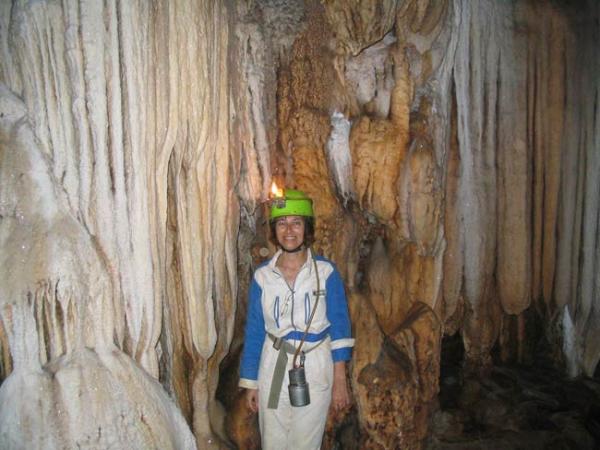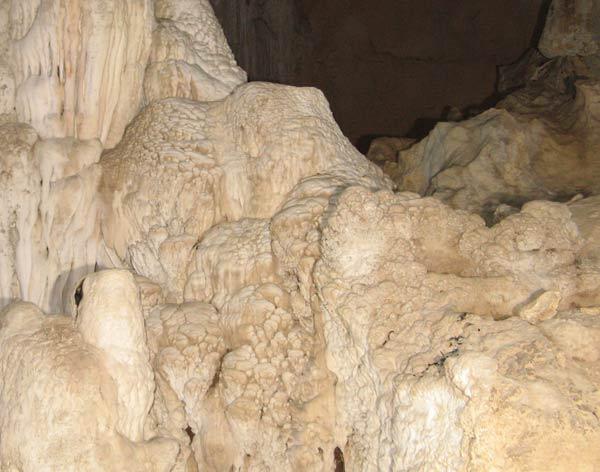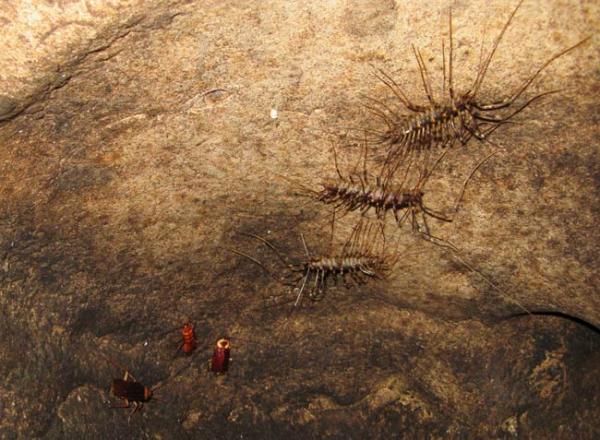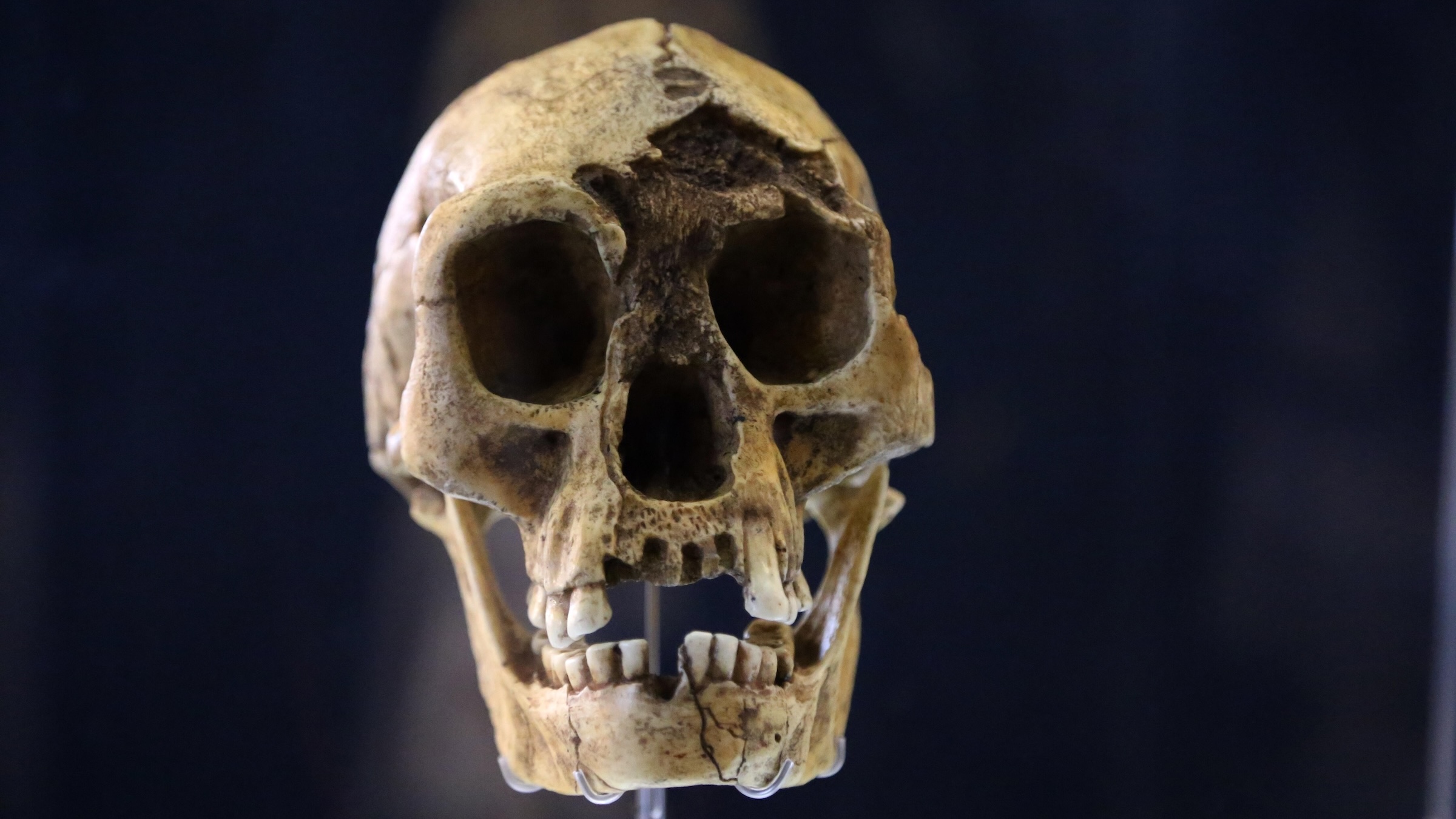Modern-Day Cavewoman Explores Spectacular Caves


Sometimes what starts off as a hobby can become an all-consuming passion one that changes a person's life forever. Such is the case for Liz Price, an English-born former pharmacy researcher.
As a university student in her native England, Price fell in love with caving . She says it was the vast, tropical caves of Southeast Asia that truly won the top spot in her heart. Now, Price calls Malaysia home, where she explores the many caves of the region, volunteering as a guide and writing about her adventures and research for books and articles.
The caves in Southeast Asia are cathedral-sized showcases of spectacular geological architecture , but Price isn't just interested in rocks. The caverns are home to a host of creatures that might send the more faint-hearted screaming in the other direction.
For Price, the giant cockroaches, huge snakes and massive centipedes that lurk in the pitch-black are part of the allure of the caves. They are creatures deserving of respect instead of revulsion, she says. [See the cave creatures Price has met .]
We asked Price to explain what it takes to be a modern-day cavewoman, and what it is that draws her, again and again, into the darkness of the caves.
OAP: So how did you get into caving in the first place?
Liz Price: When I went to university, I was persuaded by some people from the caving club to join them for a caving weekend. I didn't enjoy the first two caves. I found them small and muddy and I came out covered in bruises. However I was persuaded to do another weekend trip, and that was when I became hooked.
Get the world’s most fascinating discoveries delivered straight to your inbox.
It was quite a difficult trip in a river cave, but I really enjoyed the challenge, and to this day, that cave is one of my favorite English caves. River caves are always more special than dry caves, probably because they seem more alive. The sound of the water is exhilarating -- you can never be sure what is around the next corner. Even a mere cascade of water can sound like a large waterfall from a distance.
From then on, I got the caving bug. I can't define anything in particular that caused this, it is something that probably only cavers will understand! Every cave is different, and even if you go into the same cave many times, it never gets boring.
OAP: I understand you've explored caves all over the world. Over the years, have you had any experiences that were particularly frightening?
Price: My worst experience was in England. I was doing an extreme trip which involved a very long, wet small section of a cave, where we had to crawl flat out for a long distance, with body touching both floor and ceiling. I was sent into this confined section first, as I was the smallest in the group and the others wanted to know if it was the correct way.
It was, and I got through, but whilst waiting for the larger members of the party to negotiate the tiny passage, I got extremely cold. By the time the last member had forced his way through, I was starting to get hypothermia. I got colder and colder, and by the time we had established the correct route, I just wanted to sit there forever, which is a symptom of hypothermia.
OAP: What is the strangest creature you've encountered in a cave?
Price: Because of my love of caves and also cave fauna , I don't really consider any beasties as strange! I must have considered some of the cave invertebrates to be strange when I first encountered them. But now I like them all. Even the cockroaches!
One of my most memorable encounters was meeting a porcupine head on in a passage. I was going one way and he was coming towards me, but there was a large boulder separating us and it was only as we rounded the boulder from opposite sides that we met face to face, and both retreated backwards due to the surprise!
OAP: What is it about these creatures that intrigues you? Why do you think you're drawn to them?
Price: I've no idea why I am drawn to them. Maybe it's the fact that they live in caves, and I like caves so much! However, I admire cave fauna for its ability to survive in a pitch black environment. Bats are absolutely fascinating creatures, especially the fact that they navigate through dark caves. They are extremely useful to humans -- the fruit-eating bats help pollinate our crops, and the insect eaters feed on many insect pests. All the 'creepy crawlies' in a cave play a role in the food chain and help support the cave environment.
OAP: Has anything ever crawled on you?!
Price: Many times I've had cockroaches falling on me, running down my hair and neck, or climbing up my legs. But I just brush them off and carry on. I don't mind cave cockroaches as I consider them to be quite clean, unlike the urban ones in houses and restaurants, which crawl through dirty places. I've frequently had bat pee and poo landing on me, which isn't too pleasant.
OAP: What keeps you going back to caves?
Price: It's like asking a golfer why he keeps going back for more, or why rock climbers keep climbing cliffs. I guess it's just in my blood.
There are also many cave areas of the world which have not yet been explored. So it's quite easy to find a new cave -- a place where you are the very first person ever to tread. It is always nice know that you are the first people to enter. It's one of the few places left on the planet where you can enter virgin, unexplored territory.
- The 7 Longest Caves in the World
- Image Gallery: Amazing Caves Around the World
- Explore the Underworld: Coolest Spelunking Trips
Reach Andrea Mustain at amustain@techmedianetwork.com. Follow her on Twitter @AndreaMustain.




